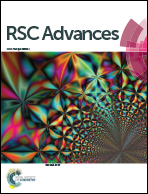Spin-polarization inversion of transport current and tunnel magnetoresistance through a non-collinear uniaxial-molecule-magnet dimer junction with electrode magnetization
Abstract
In this paper, we study quantum transport through a tunnel junction embedded with a non-collinear uniaxial molecule-magnet-dimer with the magnetization of ferromagnetic electrodes. The non-collinear angle dependence of spin polarized currents and tunnel magnetoresistance is analyzed based on the rate equation approach in a sequential tunneling regime. For the ferromagnetic dimer the majority component of spin-polarized current decreases with the increase of the non-collinear angle, while the minority component is almost unchanged. As a consequence the spin polarization inversion takes place at a critical angle value. A high spin-polarization and low-density current is realized when the anisotropy axis of the molecule-magnet is perpendicular with the magnetization of electrodes. Moreover, we demonstrate the tunable tunnel magnetoresistance from negative to positive values in the antiferromagnetic dimer junction. Our observation may have technical applications in a spintronic device.


 Please wait while we load your content...
Please wait while we load your content...